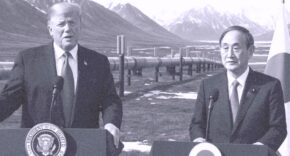President Donald Trump has launched one of the most sweeping federal science and technology initiatives in modern history. Through a major new executive order, the administration has created the Genesis Mission, a national project designed to mobilize artificial intelligence to accelerate scientific discovery, strengthen national security, and give the United States a decisive advantage in the global race for advanced technology.
The mission directs the Department of Energy, the Office of Science and Technology Policy, and the system of national laboratories to work directly with private companies. This partnership is intended to open access to federal datasets, supercomputers, scientific instruments, and decades of research investments that have never been fully connected before. Officials say the goal is nothing less than reshaping how America produces scientific breakthroughs.
What Trump Has Announced and Why It Matters
When Trump signed the executive order, he described the Genesis Mission as a national effort to harness AI for scientific progress rather than limiting it to business or consumer uses. He said the United States must build the largest and most powerful AI ecosystem in the world, and he emphasized that state-level AI rules could slow innovation. At the U.S.-Saudi Investment Forum, Trump warned that a patchwork of state regulations would be harmful, saying that such rules would be a “disaster” and that the United States “must have one Federal Standard instead of a patchwork of 50 State Regulatory Regimes.”
The executive order lays out what the White House calls an historic plan. It instructs federal agencies to identify what computing systems, datasets, and scientific resources they can provide within 90 days. It also assigns the White House science office, led by Michael Kratsios, responsibility for integrating all of those assets into the mission.
The order itself describes the program as having a scale similar to the Manhattan Project. It states that the Genesis Mission will “dramatically accelerate scientific discovery, strengthen national security, secure energy dominance, enhance workforce productivity, and multiply the return on taxpayer investment into research and development.”
How the Genesis Mission Will Work
The mission centers on creating an integrated national AI platform that links federal scientific datasets, national laboratory systems, and advanced supercomputers. According to the order, this platform will train scientific foundation models and create AI agents capable of testing hypotheses, automating research tasks, and generating breakthroughs at speeds far beyond today’s capabilities.
Energy Secretary Chris Wright explained the need for this shift by noting how the private sector’s AI development differs from scientific needs. “The private sector has launched artificial intelligence at huge scale, but with a little bit different focus on language, on business, on processes, on consumer services,” Wright said. “What we are doing here is just pivoting those efforts to focus on scientific discovery, engineering advancements. And to do that, you need the data sets that are contained across our national labs.”
The administration is also directing Wright to build a new American Science and Security Platform. This system will centralize the infrastructure required to support the Genesis Mission. It will combine supercomputers, datasets, and scientific tools into one environment that researchers across the country can access.
Michael Kratsios praised the strategy as a major shift in how the federal government supports innovation. “The Genesis Mission connects world-class scientific data with the most advanced American AI to unlock breakthroughs in medicine, energy, materials science, and beyond,” Kratsios said. He called the plan a “revolutionary approach” because it integrates data and technology that have traditionally been spread across many agencies.
Support from Scientists, Industry, and Policy Experts
Several experts see the Genesis Mission as a defining moment for American science. Keegan McBride of the Tony Blair Institute called the announcement “significant” and said it shows what is possible when a nation aligns behind AI-driven discovery. He told NBC News, “AI has the potential to transform the entire scientific, research, and discovery pipeline. This represents a strong signal from the U.S. to the world about what is possible.”
Industry leaders have also welcomed the initiative. Nvidia praised the plan, saying in a public statement that it will “connect America’s leading supercomputers, AI systems, and next-generation quantum machines into the most complex scientific instrument ever built.” Nvidia also said that uniting national labs, industry, academia, and the federal government will accelerate breakthroughs in energy, discovery, and national security.
Anthropic, a major AI startup, is joining the mission as well. Their participation reflects the administration’s push for public-private partnerships. Federal officials say collaboration with private companies is critical because AI models require immense computing power and data that no single institution can provide alone.
Lynne Parker, former co-chair of the National AI Research Resource task force, explained why federal involvement is essential. She said, “Government support for AI research builds the foundation for new breakthroughs and helps keep innovation aligned with the public interest.” She added that people often overlook how many years of government research are required to enable the breakthroughs that later appear in commercial products. “Without long-term investment, we risk ceding leadership in the technologies that will define our economy, our security, and our daily lives,” Parker said.
Context
The Genesis Mission expands on Trump’s earlier AI initiatives. In July, the administration released “Winning the Race: America’s AI Action Plan,” which outlined a national strategy to accelerate AI development, strengthen international leadership, and use private companies to build up AI infrastructure.
Trump has also emphasized deregulation as a key part of his technology strategy. Since returning to the White House, he has encouraged cutting red tape around AI and has urged Congress to create a national AI standard. He insists that innovation depends on avoiding conflicting state laws, telling audiences that he will create “a one approval process” instead of having companies navigate different rules across all fifty states.
In recent weeks, the Department of Energy has announced new partnerships to build next-generation AI supercomputers with AMD, Hewlett Packard Enterprise, and Nvidia. These systems will expand the capabilities of national laboratories like Oak Ridge, which already hosts some of the world’s leading AI and quantum research projects.
Expected Economic and Global Impact
Supporters believe the Genesis Mission will reshape both the economy and global competition. By giving researchers access to the world’s largest collection of scientific datasets and the most advanced supercomputers, the United States could speed up discoveries in biotechnology, quantum computing, energy production, materials science, and space exploration.
This would strengthen industries that depend on scientific innovation and help secure what the White House calls “energy dominance.” It could also increase workforce productivity by bringing AI into sectors that historically depended on manual research and slow experimentation.
The mission is also viewed as a response to China’s rapid investment in AI, semiconductors, and high-performance computing. At the U.S.-Saudi Investment Forum, Trump said the United States will “work to build the largest, most powerful, most innovative AI ecosystem in the world.” Many experts believe this is meant to send a message to global competitors that the U.S. intends to set the pace for scientific progress.
Benjamin H. Bratton, an AI expert at the University of California, San Diego, supported the mission’s emphasis on broad access to AI. He said, “It is less important whose AI people have access to than that they have universal access at all.” Bratton added that attempts to slow AI development often come from groups protecting their own influence. He argued that “those locked out of positions of artificially scarce social agency have the most to gain.”
Skeptics wonder whether the mission’s aggressive goals can be achieved on the timeline described in the order. They note that integrating decades of federal datasets, hardware systems, and research cultures into a single platform is a massive logistical challenge. There are also concerns about privacy and data security because the federal government stores a vast amount of sensitive information.
Still, even critics acknowledge that the global race for AI leadership is speeding up and that the United States must act decisively to stay ahead.
The Genesis Mission represents a new phase in how the federal government approaches scientific innovation. By linking national labs, private companies, supercomputing centers, and federal agencies into one coordinated system, the project sets out to change the scale and speed of scientific research.
Supporters see it as a historic step that will shape medicine, energy, materials science, robotics, and national security for decades. Skeptics warn that the plan must be executed carefully to avoid legal and technical pitfalls. But both sides agree that artificial intelligence will define global competition, and the Genesis Mission shows that the Trump administration intends for the United States to lead that competition with unmatched scientific firepower.











